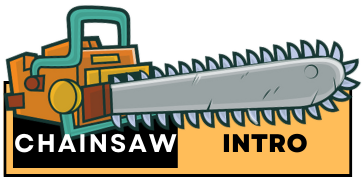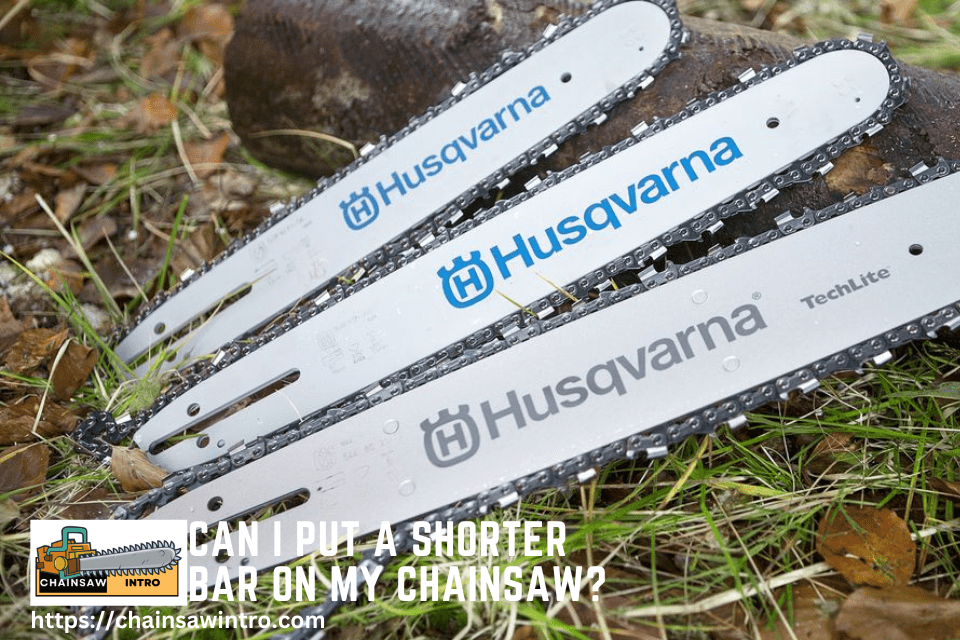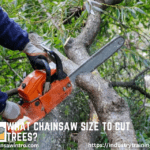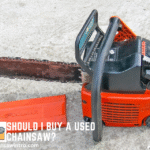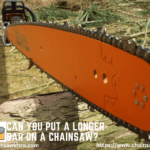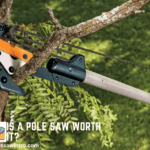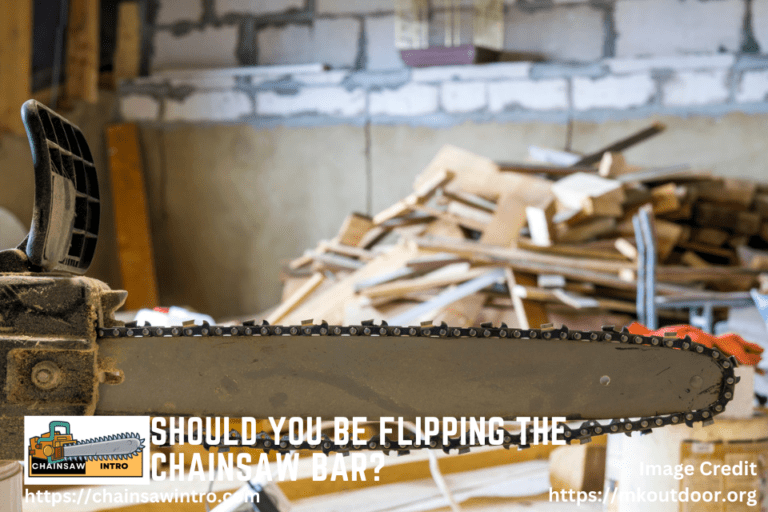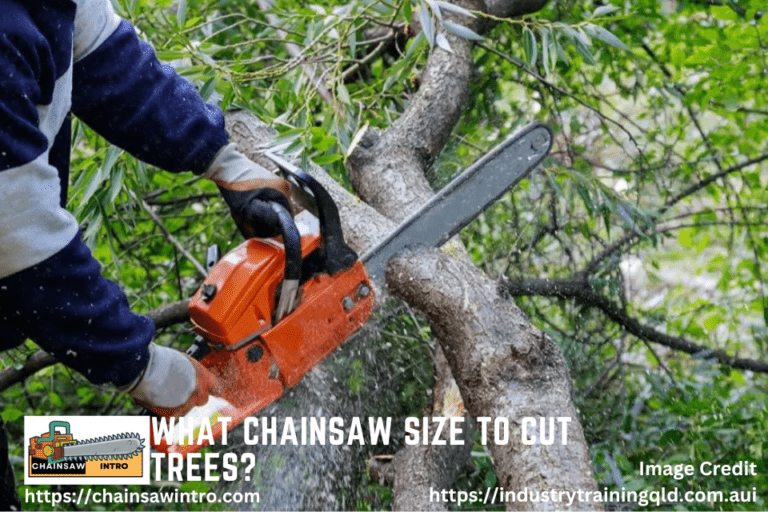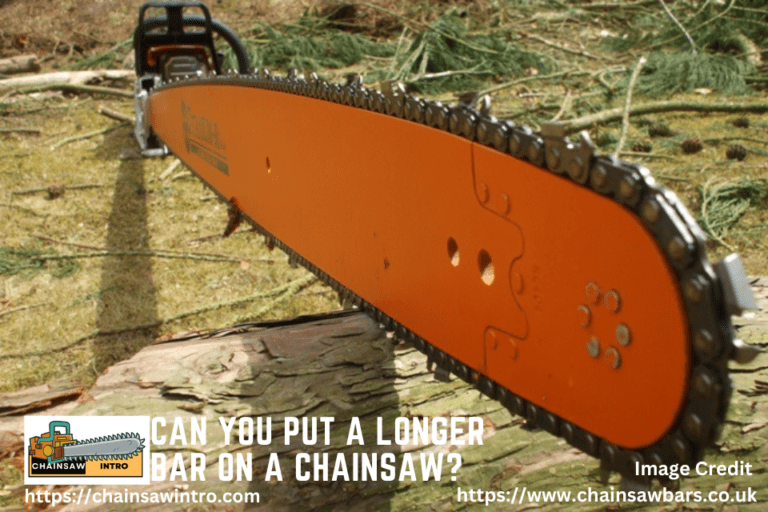If you own a chainsaw, you may have wondered: “Can I put a shorter bar on my chainsaw?” The answer is yes, in most cases you can—as long as the new bar is compatible with your saw’s engine size, chain type, and manufacturer’s specifications. Changing to a shorter bar can actually improve control, reduce fatigue, and make your chainsaw more efficient for certain tasks. However, there are also important factors to consider before making the switch.
In this guide, we’ll cover the pros and cons of shorter chainsaw bars, compatibility requirements, and when a shorter bar makes sense for your cutting needs.
Running a Longer Bar on a Chainsaw?
What Does a Chainsaw Bar Do?
The chainsaw bar is the long, flat metal guide that the chain rotates around. It determines the cutting capacity of your chainsaw—the longer the bar, the larger the wood you can cut in a single pass. For example:
- A 16-inch bar can handle small to medium logs and yard work.
- A 20-inch bar is better for felling larger trees and cutting big firewood.
That said, longer isn’t always better. Many users find shorter bars more manageable, especially for trimming and general yard maintenance.
Can You Put a Shorter Bar on Your Chainsaw?
Yes, in most cases, you can put a shorter bar on your chainsaw, provided it’s compatible with the saw’s powerhead, chain pitch, gauge, and drive link count. Chainsaw bars, which guide the chain during cutting, typically range from 10 to 36 inches, and manufacturers like Stihl, Oregon, and Husqvarna design saws to accommodate a range of bar lengths.
For example, a chainsaw rated for an 18-inch bar, like the Echo CS-590, can often handle a 16-inch or 14-inch bar, improving control for tasks like pruning or limbing. However, using a bar significantly shorter than recommended may reduce efficiency or strain the motor, so compatibility is key.
Why Use a Shorter Bar on Your Chainsaw?
Switching to a shorter bar offers several advantages, per 2025 Oregon guides and Reddit feedback:
- Improved Maneuverability: Shorter bars (e.g., 12-16 inches) are easier to handle, ideal for pruning branches or cutting in tight spaces.
- Reduced Weight: A shorter bar and chain reduce the saw’s overall weight, decreasing user fatigue, especially for lightweight models like the Greenworks 40V.
- Lower Power Demand: Shorter bars require less power to drive the chain, extending battery life in electric saws or reducing engine strain in gas models.
- Enhanced Safety: Smaller bars reduce kickback risk, which causes over 30% of chainsaw injuries, per the CDC, making them safer for beginners, per our article on chainsaw safety.
- Task-Specific Efficiency: For tasks like limbing or cutting small logs (6-12 inches), a shorter bar provides better precision.
For example, swapping a 20-inch bar on a Husqvarna 455 Rancher for a 16-inch bar can make pruning easier without sacrificing performance for small to medium tasks.
Benefits of Using a Shorter Chainsaw Bar
Switching to a shorter bar can offer several advantages:
1. Better Control
A shorter bar makes the saw lighter and easier to maneuver, reducing fatigue and making it safer for beginners.
2. Faster Cutting Speed
Since the engine doesn’t have to drive as much chain, a shorter bar often leads to quicker, cleaner cuts.
3. Safer for Beginners
Shorter bars reduce the chance of kickback accidents, making them ideal for less experienced chainsaw users.
4. More Efficient for Small Tasks
If most of your work involves pruning, limbing, or cutting small firewood, a shorter bar is not only sufficient but also more practical.
Compatibility Considerations for Shorter Bars
Before installing a shorter bar, ensure compatibility with your chainsaw, per 2025 Stihl manuals:
- Chain Pitch: The spacing between chain links (e.g., 3/8”, .325”, or 1/4”) must match the bar and saw’s sprocket. Mismatched pitch prevents proper chain fit, per Oregon guides.
- Chain Gauge: The thickness of the chain’s drive links (e.g., .050”, .058”, .063”) must fit the bar’s groove, per our article on chainsaw sprockets.
- Drive Link Count: A shorter bar requires a chain with fewer drive links (e.g., a 16-inch bar may need 60 links vs. 72 for an 18-inch bar).
- Mounting Pattern: The bar’s mounting slot must match the saw’s stud pattern (e.g., Stihl’s D025 or Oregon’s A041).
- Powerhead Capacity: The saw’s engine or motor must support the bar length. Most saws support bars 2-4 inches shorter than the stock size, but check the manual.
For example, the Ego CS2005 (56V) with a 20-inch bar can typically use a 16-inch or 18-inch bar, but going below 14 inches may strain the motor, per manufacturer specs.
How to Choose the Right Shorter Bar?
To select a compatible shorter bar, follow these steps, per 2025 Oregon guides:
- Check the Manual: Verify the manufacturer’s recommended bar lengths (e.g., Stihl MS 271 supports 16-20 inches).
- Match Specifications: Ensure the bar’s pitch, gauge, and mounting pattern align with your saw and chain.
- Select Quality Brands: Choose bars from reputable brands like Oregon, Stihl, or Husqvarna ($20-$100), which last 2-5 years with proper care, per our article on chainsaw bar lifespan.
- Adjust Chain Length: Purchase a chain with the correct drive link count for the shorter bar.
- Test Fit: Install the bar and chain, ensuring proper tension and alignment, per our chainsaw maintenance guides.
For example, replacing an 18-inch bar on a Greenworks 80V with a 14-inch Oregon bar requires a chain with fewer drive links (e.g., 52 vs. 62) and matching .050” gauge and 3/8” pitch.
Final Verdict: Should You Put a Shorter Bar on Your Chainsaw?
Yes—you can put a shorter bar on your chainsaw, and in many cases, it’s a smart decision. Shorter bars improve handling, safety, and cutting efficiency for everyday tasks like pruning, trimming, and firewood cutting. Just make sure to follow your chainsaw’s recommended bar length range, and always match the chain and sprocket correctly.
If you need a tool for casual yard work, a shorter bar may make your chainsaw easier and safer to use. But if you’re regularly cutting large trees, keeping your longer bar might be the better option.
Frequently Asked Questions
Can I put a 16-inch bar on a 20-inch chainsaw?
Yes, as long as the chainsaw manufacturer lists 16 inches within the recommended bar length range for your model. Always check the manual to avoid performance or safety issues.
Do I need a new chain if I switch to a shorter bar?
Yes. A shorter bar requires a chain with fewer drive links, so you’ll need to buy a chain that matches the new bar’s length, pitch, and gauge.
What happens if I use the wrong bar size on my chainsaw?
Using a bar outside the recommended size can cause poor performance, faster wear, or even dangerous kickback, and may damage the saw’s motor or sprocket.
Is a shorter chainsaw bar safer?
Generally, yes. A shorter bar is easier to control and less prone to kickback, making it safer for beginners and casual users.
Should I use a shorter bar for firewood cutting?
If you’re cutting small to medium logs, a shorter bar is efficient and easier to handle. However, for large logs or hardwood trees, a longer bar may be more practical.
Can I switch between bar sizes regularly?
Yes, as long as both bars are within your saw’s approved size range. Many users keep multiple bar lengths for different tasks, swapping them as needed.
How Does Bar Length Affect a Chainsaw?
The bar length is a very important factor in the overall performance of your chainsaw. A longer bar will give you a greater cutting capacity and more power to cut larger trees. On the other hand, a shorter bar will not be as powerful and will have less cutting capacity. This means that if you are using a large chainsaw with a short bar, it will struggle to cut through big trees.
Conversely, if you use a small chainsaw with a long bar, it will not be as efficient at cutting smaller trees. A longer bar also makes it easier to make long straight cuts and to cut curves or angles in wood. A short bar makes it difficult to cut curves or angles and you have to move the chainsaw more to make straight cuts.
What is the Most Popular Chainsaw Bar Length?
The most popular chainsaw bar lengths are 14”, 16”, 18” and 20”. The 14” bar is suitable for light duty work such as pruning and trimming small trees. The 16” bar is suitable for medium to heavy duty work such as felling medium sized trees and cutting large logs. The 18” bar is suitable for heavy duty work such as felling large trees and cutting large logs. The 20” bar is suitable for the most demanding tasks such as cutting large logs and felling very large trees.
Can I Put a 16 Bar on a 14 Chainsaw?
No, you cannot put a 16-inch bar on a 14-inch chainsaw. The bar size must match the chainsaw size for it to be compatible. If you try to use a larger bar on a smaller chainsaw, it will not fit properly and can cause serious damage to your saw. So be sure to always check that the size of your bar and chainsaw matches before installing a new one.
Is a Bigger Chainsaw Bar Better?
A larger bar will give you more control and power when cutting down trees or logs. But it also depends on what type of material you’re cutting. If your chainsaw has a 16-inch bar, it might not be the best tool for cutting through thick branches. On the other hand, if you’re using a 14-inch chainsaw with a 12-inch bar, then this could actually make your job easier because you have more room to maneuver around obstacles in your way. The bigger the bar size is, the less likely it will become stuck when cutting wood as well!
William C. Bozeman is a seasoned chainsaw expert and outdoor power tool enthusiast with over a decade of hands-on experience in tree cutting, forestry, and property maintenance. Having worked with leading chainsaw brands like Stihl, Husqvarna, and Oregon, Bozeman shares practical knowledge, safety tips, and honest reviews to help homeowners, DIYers, and professionals make informed decisions.
